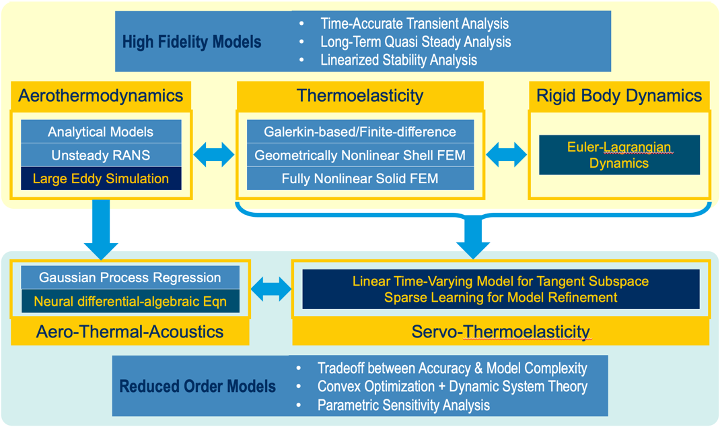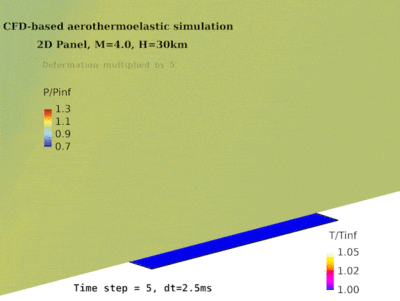Published: Aug 15, 2019 by Daning Huang

The accurate computation of the aerothermoelastic response over the extended flight time is a key ingredient in analyzing performance, stability, and reliability of hypersonic vehicles. The difficulty arises from the unique nature of the hypersonic aerothermoelastic problems – the disparity of characteristic times of different disciplines: the fluid characteristic time is several orders of magnitude smaller than the structural characteristic time, and the structural characteristic time is several orders of magnitude smaller than the thermal characteristic time. The disparity in the characteristic times produces not only diverse interaction mechanisms between the three disciplines but also imposes differing convergence requirements in the numerical solutions applied to each discipline.

We developed an efficient, highly-parallelized computational framework for numerical simulation of aerothermoelastic responses, denoted HYPATE, HYPersonic AeroThermoElasticity simulation framework. The framework employs a partitioned approach so that the fluid, thermal and structural responses are computed by separate solvers and the coupling between the solvers is achieved by exchanging boundary data at the interfaces of the physical domains.
The development traces back to Dr. Huang’s Ph.D. work at UMich, and continues at PSU since 2019. The latest, extended version, HYPATE-X, is illustrated on the left.

The HYPATE framework has the following unique features:
- Carefully-designed coupling schemes to ensure the robustness and accuracy of numerical aerothermoelastic solutions for rapid simulation over the extended flight times.
- Modularized framework architecture to enable the incorporation of different physical solvers of variable fidelity.
- A tool based on linearized stability analysis for automatic identification of the onset of aerothermoelastic instability.
For more technical details on the coupling schemes and the individual solvers, please refer to our papers SciTech2016, AIAAJ2018, and JFS2020.